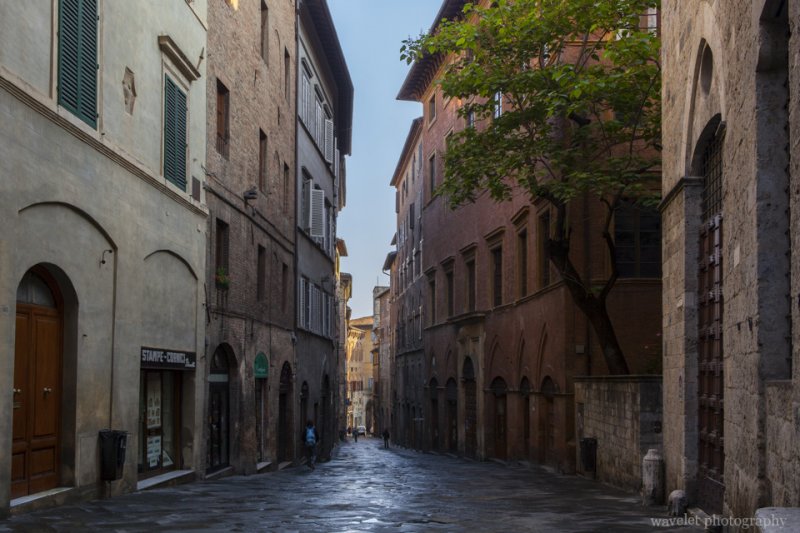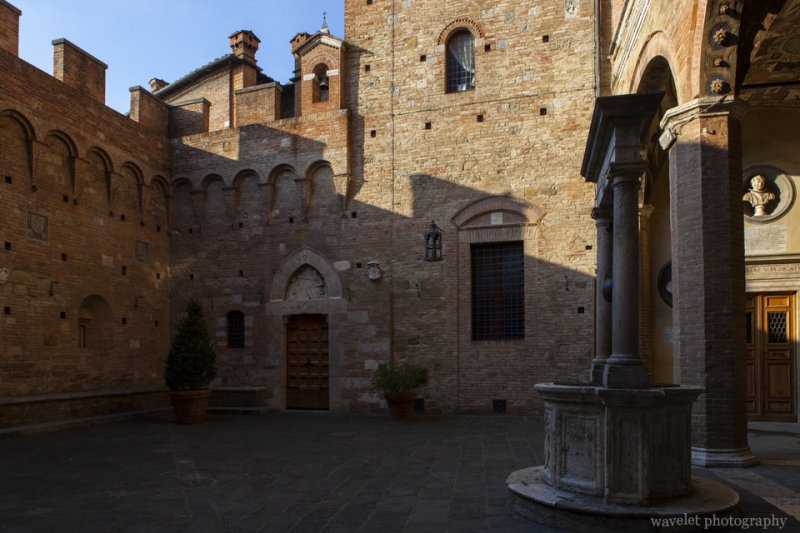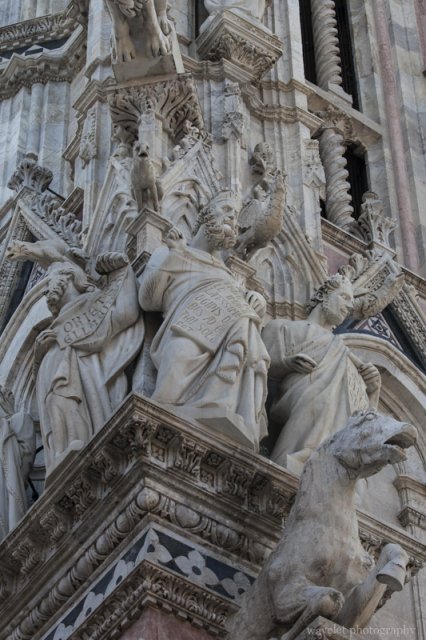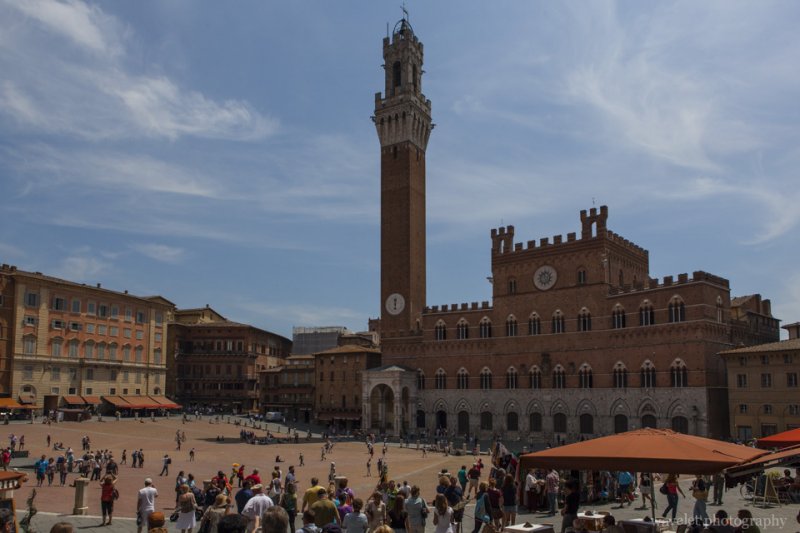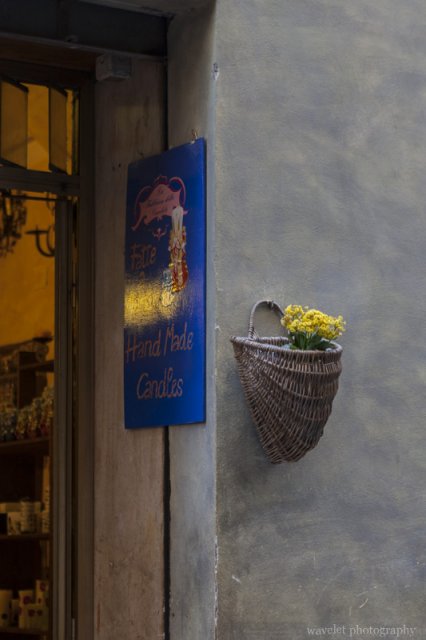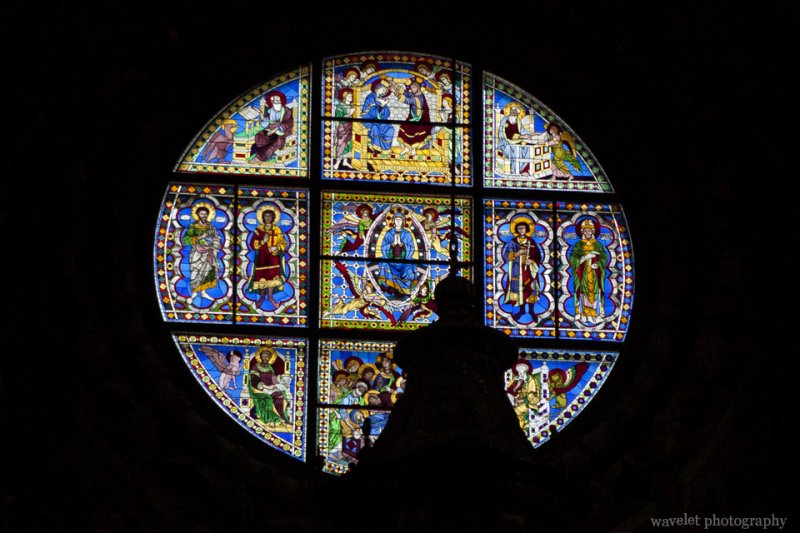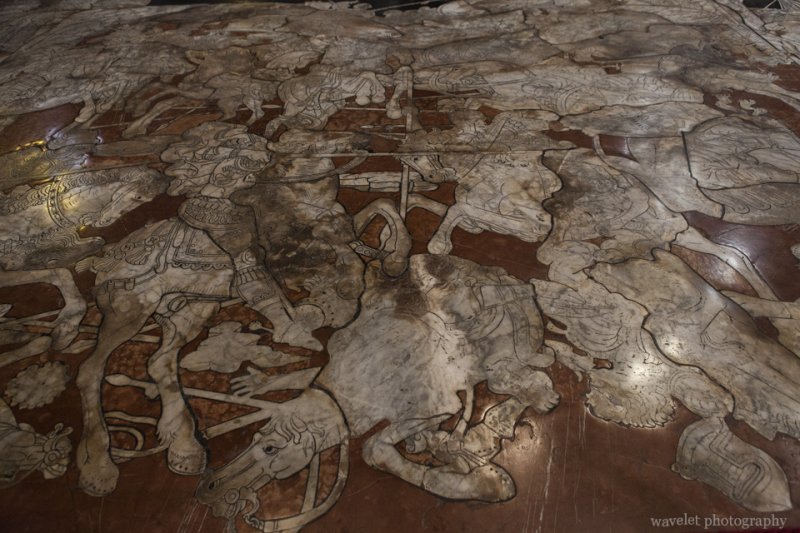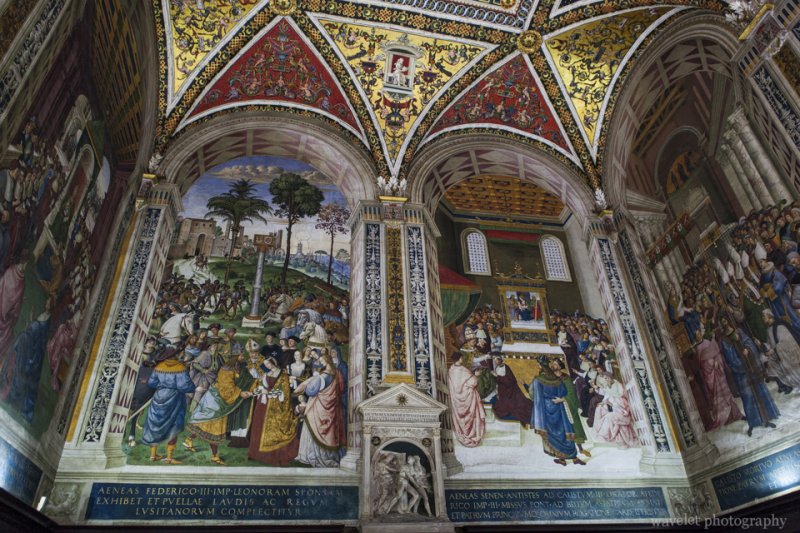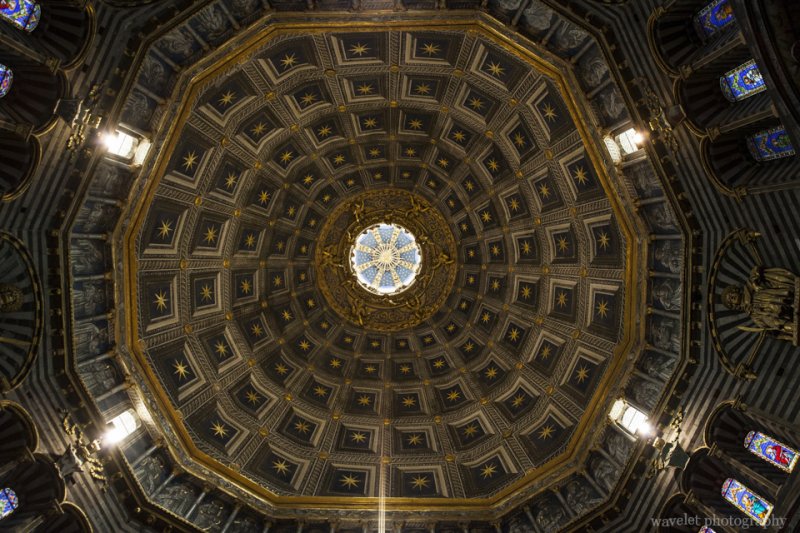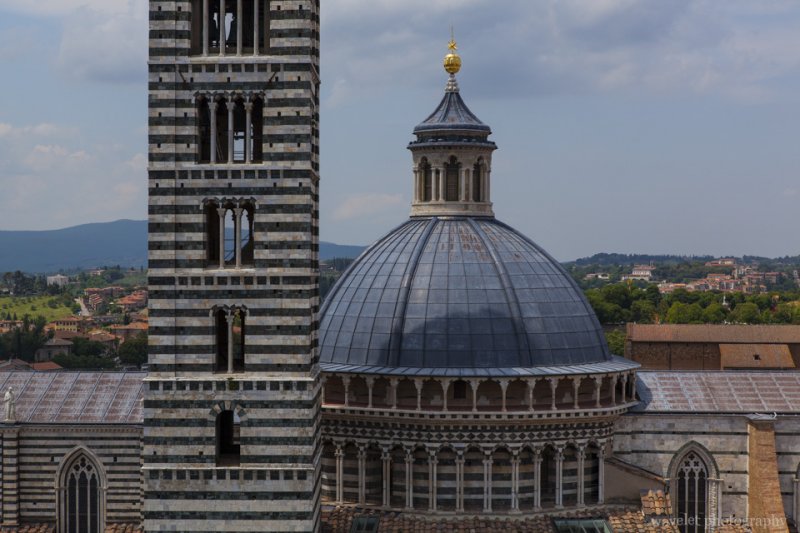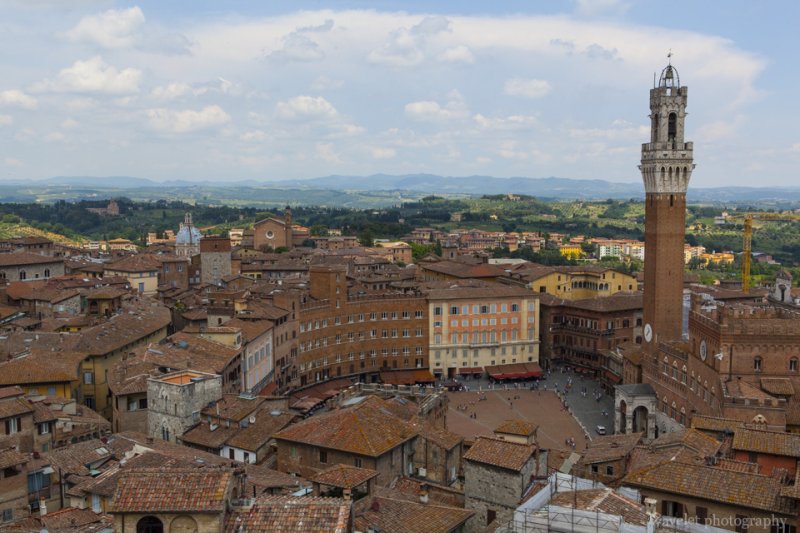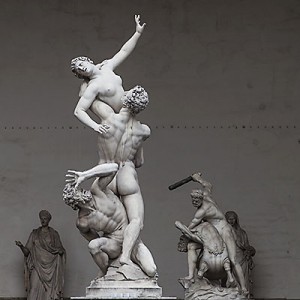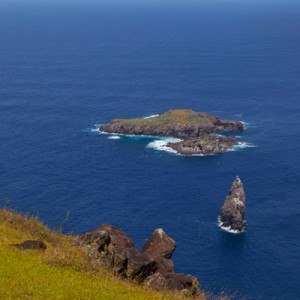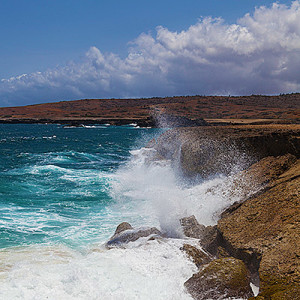2012.5.30~31Famous for its art and religious works, Siena was once a rival to Florence for the dominance of Tuscany from medieval time to the Renaissance. Today, the city is an UNESCO heritage site. It may be the best preserved medieval city in Italy, thanks to its conquest by Florence – as Florence became bigger and busier, Siena turned its focus on building the city to retain its traditions and blend into its surrounding landscape.
Tourists’ vehicles are not allowed to enter the inner city. From our hotel, alone Via Roma, it takes 15 to 20 minutes to walk to the city center. At the first day morning, I got up at 6am and had a walk in the city. In the early morning, tourists had not taken the streets yet.
The view of the shell-shaped brick-paved public square, Piazza del Campo, is a signature image of Tuscany. At one end, there sit the tower of the town, Torre del Mangia, and the city hall, Palazzo Pubblico; at the other end, it’s the Fonte Gaia (Fountain of Joy). Every year, two horse races, Palio, are run in the piazza, to promote pride and rivalry of among 17 contrade of Siena.
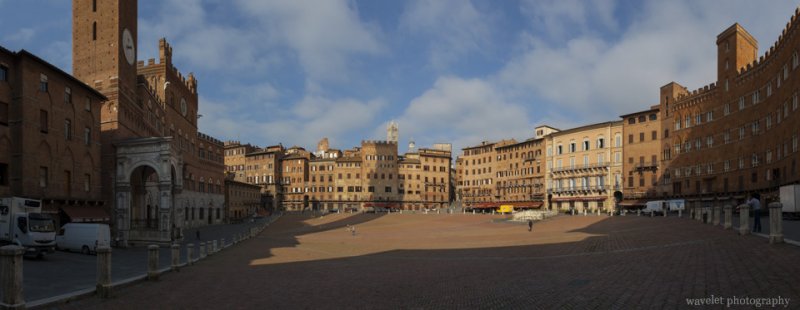
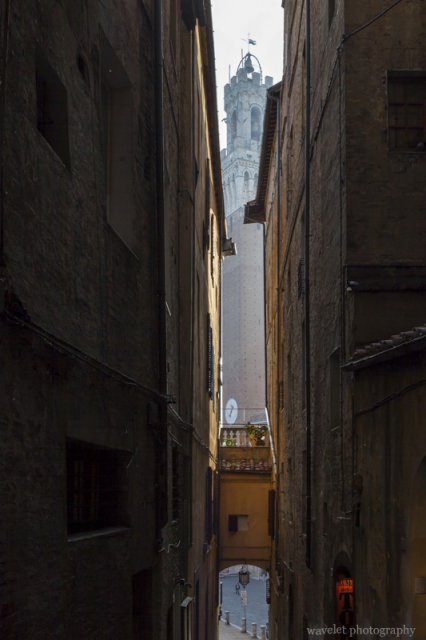
When I walked to the Piazza del Duomo, where Siena’s main cathedral is located, the morning sun just started lighting up the piazza. The churches were immersed in the warm golden sunlight.
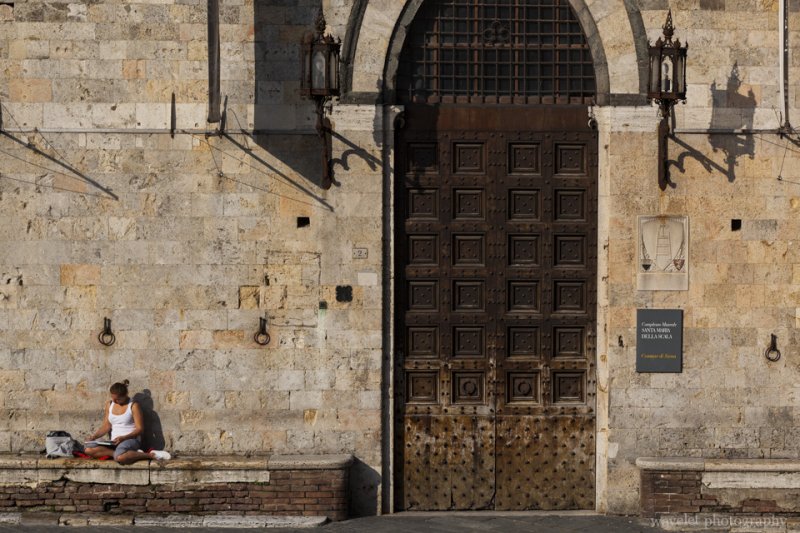
Siena’s main cathedral is a Romanesque-Gothic style church. Its west façade is a masterpiece of medieval architecture. The façade was built in two stages, the lower part was designed in Tuscan Romanesque style, the statues and pinnacles of the upper part was heavily influenced by French Gothic architecture.
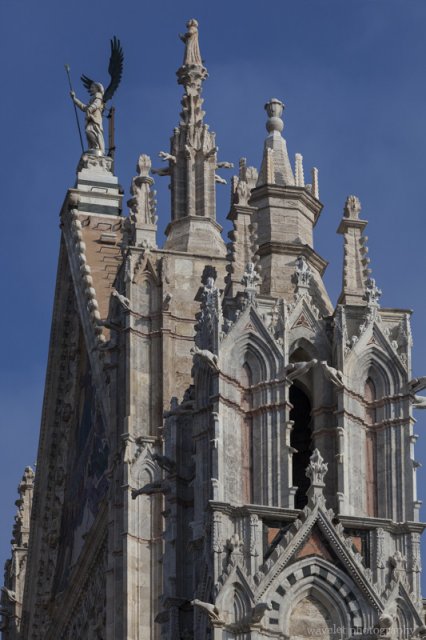

After spent the rest of the day in the country side, we returned to the city center the next day morning.
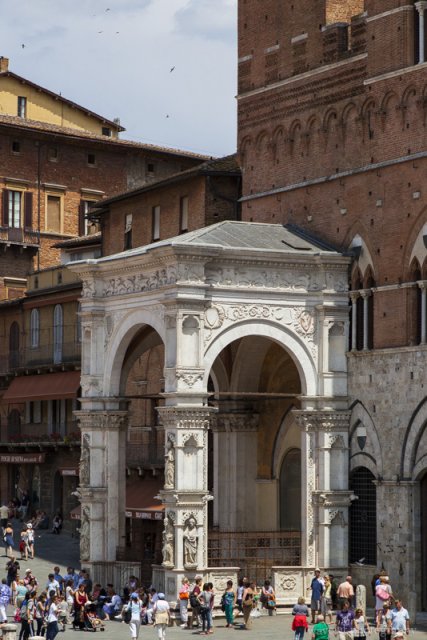
We paid a small entrance fee to get into the Duomo.
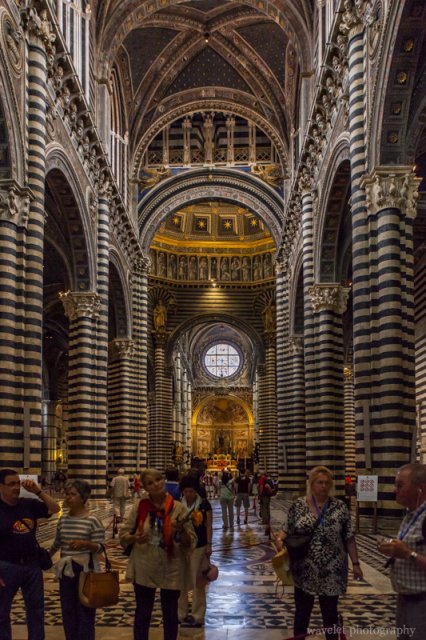
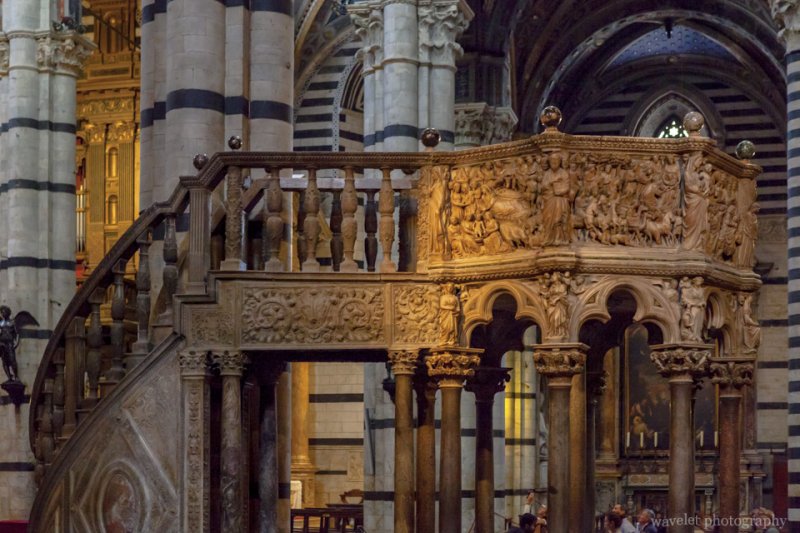
The Duomo was supposed to be enlarged to double its current size, but the Black Plague in 1348 stopped the effort. We climbed to the top of the unfinished façade. From there, we had a panorama view of Siena.
Walking out of the Duomo, we had a lunch at Trattoria Papei at Piazza del Mercato, right behind Piazza del Campo.
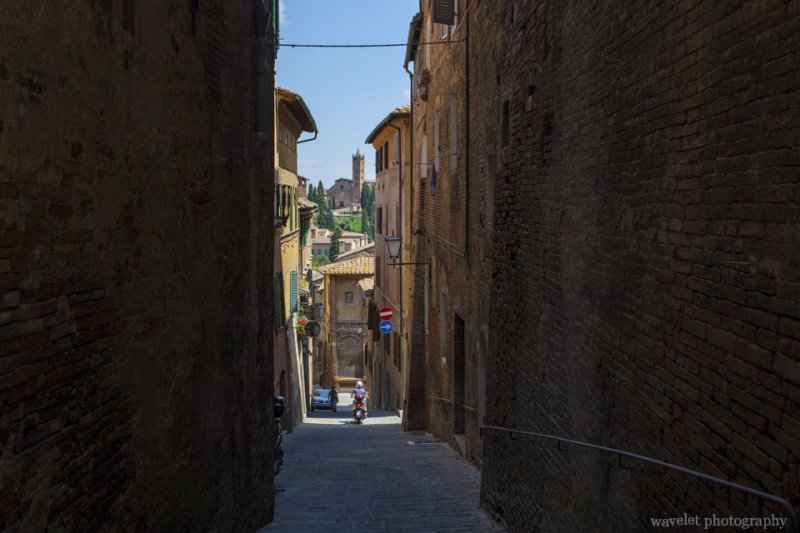
We left Siena at afternoon and drove to Florence, which is only 50 miles away. We returned our car at the airport, which is the best decision I made of the trip, and took taxi into the city.
